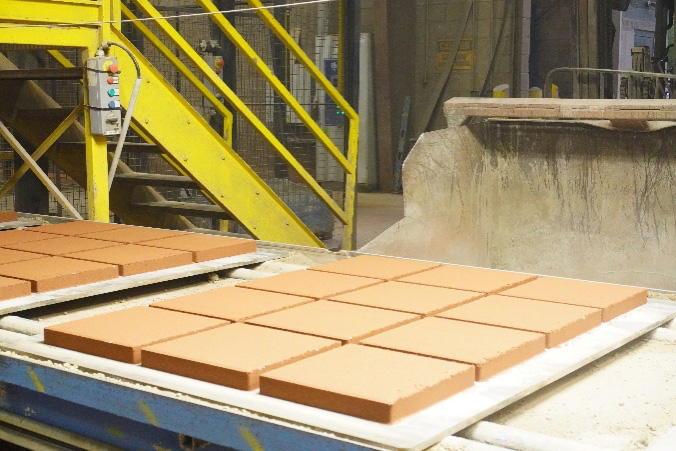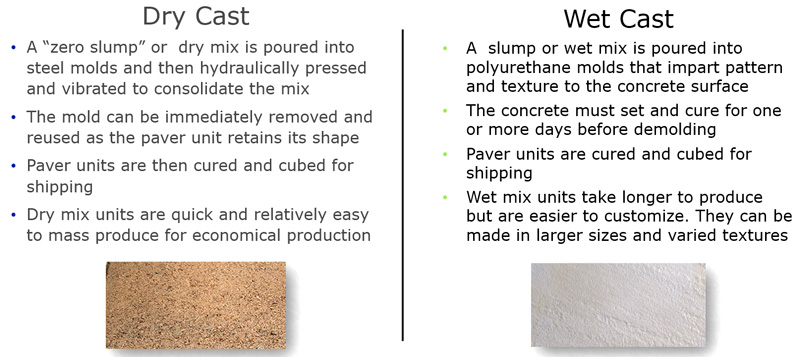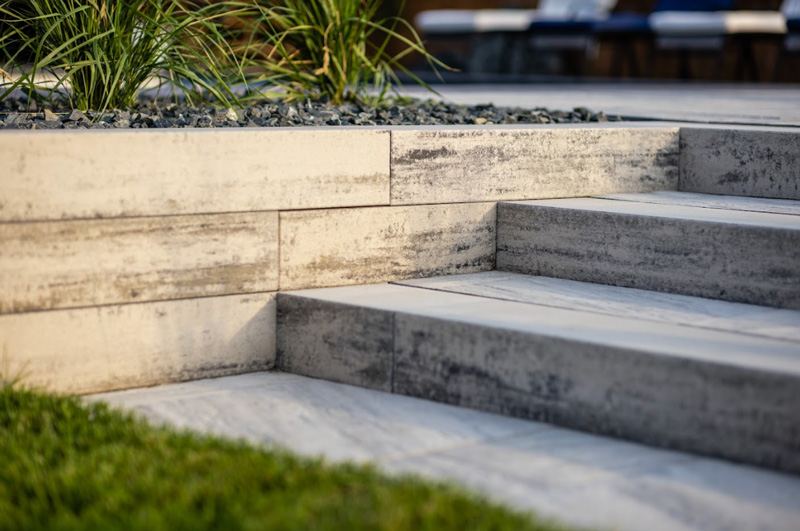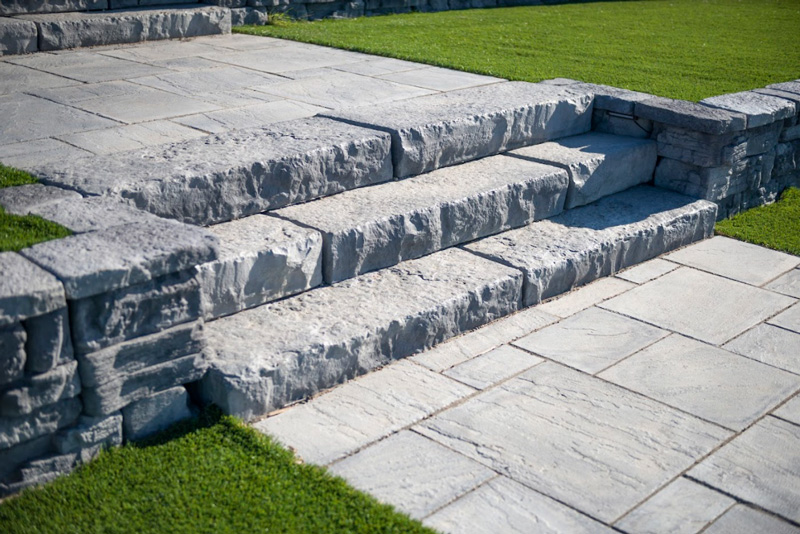Most traditional dry cast or zero slump pavers will follow the steps below. Bear in mind that producers are coming up with new and interesting production methods and paver finishes every day!
Dry cast or zero slump concrete holds its shape immediately after a mold is removed, similar to packing sea sand into a bucket (mold) to make a sand castle on your beach vacation.
In dry cast concrete production the raw materials are fed into a mixer which combines them until the mix is homogenous. The mixing is important to get the cementitious materials and water in contact so that a chemical reaction called cement hydration can occur. During the hydration reaction, cement and water interact to form cement paste which hardens and becomes the “glue” that holds the aggregates together.
Dry cast paver production is a highly automated process. The business model of dry cast manufactured concrete products depends on highly efficient, mass production of concrete units that are also efficient to install: at a minimum concrete paver units must be sufficiently strong, dimensionally correct and dimensionally stable when they are installed.
Large, sophisticated plants can cost millions of dollars with new options for molds and finishes becoming available every year.
Dry cast concrete units are mixed and molded into shape in minutes. The freshly compacted units are able to hold their shape immediately after mold is removed including during transportation to the curing station, which is often a kiln. A kiln is a controlled environment where temperature and humidity are optimized to maximize cement hydration, strength gain and color development by the concrete. Dry cast concrete must be cured, usually for at least a few days, so that it can gain sufficient strength to withstand handling, installation, traffic loads and weathering over time.
Inline surface treatments are spray applied to the paver surface before the units are cured, and are bonded to the paver surface during curing. Inline treatments are used to enrich color and protect paver surfaces from staining and fading.

For comparison purposes, see the dry cast vs wet cast production and output summaries below:

To find out more about the benefits of interlocking concrete pavers from ICPI, click https://icpi.org/benefits-fact-sheets
Example of dry cast step units and segmental retaining wall

